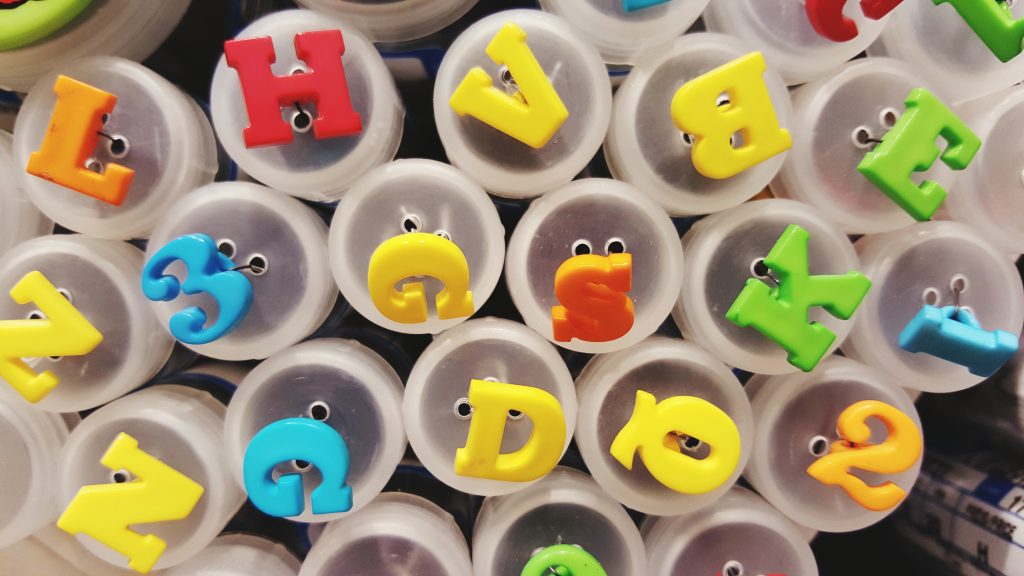They say, “A journey of a thousand miles begins with a single step.” And so it is with teaching young children, as they embark on the path of learning the alphabet. But can 2-year-olds really memorize alphabets? It’s a question that many parents and educators ponder. In this discussion, we will explore the possibilities and challenges of introducing the alphabet to toddlers. So, fasten your seatbelts and get ready to discover the fascinating world of early alphabet learning.
Age to Start Teaching the Alphabet
If you’re wondering when to start teaching the alphabet to your child, most children recognize some letters between the ages of 2 and 3. This is the perfect time to introduce alphabet recognition. Teaching the alphabet at a young age has several benefits. First, personalized alphabet learning can make it more engaging and fun for toddlers. You can use their name to personalize activities, such as signing their name on their artwork or using alphabet letters to decorate their room. Repetition is key in alphabet recognition. By repeating the letters and their sounds, children can develop a solid foundation for reading skills later on. Early alphabet learning can have a positive impact on reading skills. While it doesn’t guarantee advanced reading skills, it helps children become familiar with letters and their sounds. To make alphabet learning fun for toddlers, incorporate activities that involve play and exploration. Use colorful alphabet books, puzzles, and games to keep them engaged. Remember, every child learns at their own pace, so be patient and provide a supportive learning environment.
Visual Aids for Teaching the Alphabet
Now let’s explore how visual aids can enhance the teaching of the alphabet. Using colorful books, personalized toys, alphabet puzzles, word association, and alphabet recognition techniques can make learning the alphabet more engaging and effective for 2-year-olds. Colorful alphabet picture books are a great visual aid to introduce letters and help children associate them with colors, shapes, animals, and objects. Children can easily point out letters and interact with the book, making learning more interactive and fun. Personalized toys and puzzles with their name formed by alphabet letters can also grab their attention and make learning more personal. Word association games using the first letter of their name can help them understand the connection between letters and words. Alphabet puzzles can be used for hands-on manipulation and reinforcement of letter recognition. By incorporating these visual aids, you can create a stimulating learning environment and enhance your child’s understanding and recognition of the alphabet.
Introducing Individual Letters
To introduce individual letters to your 2-year-old, you can start by signing their name to their artwork and pointing out each letter one by one. This helps them understand that the letters form their name. You can also personalize their room with alphabet letters forming their name. Using personalized toys or puzzles with their name on it can be a fun way to reinforce letter recognition.
Another effective way to teach individual letters is through artwork. Encourage your 2-year-old to draw or paint using different colors and shapes. As they create their masterpiece, point out the letters in their artwork and ask them to identify each one. This not only helps them recognize the letters, but also enhances their creativity and fine motor skills.
Playing word games is another engaging way to introduce individual letters. Start with the first letter of their name and encourage them to think of words that start with that letter. You can also use alphabet puzzles or refrigerator magnets for hands-on manipulation. Reinforce letter recognition by associating words with the letters they represent.
Word Games With Recognized Letters
As your 2-year-old becomes familiar with individual letters, you can make learning even more fun by playing word games with the letters they have recognized. These word games not only reinforce alphabet recognition but also help in developing phonics skills and expanding vocabulary. Here are some alphabet recognition activities that you can incorporate into your playtime:
| Alphabet Recognition Activities | Developing Phonics Skills | Interactive Alphabet Games |
|---|---|---|
| * Match objects or pictures to the letters they start with. | * Sound out words that start with the recognized letter. | * Play interactive alphabet games on educational apps or websites. |
| * Sort objects or pictures based on the letter they belong to. | * Practice blending sounds to form simple words. | * Use alphabet puzzles or flashcards to play matching games. |
| * Play “I Spy” using the recognized letters. | * Identify rhyming words that start with the recognized letter. | * Engage in sensory play with alphabet foam letters or sandpaper letters. |
| * Sing alphabet songs and point to the recognized letters as you sing. | * Practice segmenting words into individual sounds. | * Use letter magnets to create words on a magnetic board. |
Incorporating sensory play in alphabet learning can make it more engaging for your child. You can use textured materials like sandpaper letters or foam letters to help them feel the shape of each letter as they play. Additionally, technology can also be a useful tool for alphabet learning. There are many interactive alphabet games available on educational apps and websites that can provide a fun and interactive learning experience for your child.
Interest and Timing for Alphabet Learning
If your 2-year-old shows interest in learning the alphabet, it’s a great time to start introducing them to the letters. Early exposure to the alphabet has several benefits, including laying the foundation for future reading and language skills. Learning the alphabet can be a fun and engaging process for toddlers, and it’s important to incorporate play into their alphabet learning activities. Here are some strategies for engaging your toddler in alphabet activities:
Benefits of Early Alphabet Exposure:
- It helps develop letter recognition skills.
- It promotes language development and vocabulary expansion.
- It enhances cognitive and problem-solving abilities.
Importance of Play in Alphabet Learning:
- Playful activities make learning enjoyable for toddlers.
- Use toys, games, and interactive materials to make alphabet learning fun.
- Incorporate songs, rhymes, and fingerplays to engage your child’s senses.
Individualized Approach to Alphabet Learning:
- Understand that every child learns at their own pace.
- Take into account your child’s interests and learning style.
- Personalize alphabet activities to align with their preferences.
Incorporating Alphabet Learning in Daily Routines:
- Look for opportunities to introduce letters in everyday activities.
- Point out letters on signs, labels, and packaging.
- Read alphabet books during storytime.
Strategies for Engaging Toddlers in Alphabet Activities:
- Use hands-on activities like sensory bins, puzzles, and building blocks.
- Practice letter recognition through games and crafts.
- Create letter-themed scavenger hunts or treasure hunts.
Age of Alphabet Acquisition
Children typically acquire the alphabet by the age of three, with some children learning as early as their twos and others learning in their late threes. The age of alphabet recitation may vary for each child. Repetition plays a crucial role in learning the alphabet, so engaging in alphabet recognition activities can be beneficial. Encourage your child to participate in activities like singing the ABC song, pointing out letters in books, or playing with alphabet puzzles or refrigerator magnets. While writing the alphabet is typically taught in preschool and kindergarten, some children may start writing letters around ages four to five. You can support their learning by practicing writing letters at home and helping them trace letters. Learning phonics, associating letters with their sounds, usually begins in kindergarten, but the age at which children learn phonics may vary. Remember, every child learns at their own pace, so focus on age-appropriate activities and play for toddlers while keeping in mind the milestones for alphabet acquisition.
Challenges in Learning the Alphabet
When it comes to learning the alphabet, children may face various challenges along the way. It’s important to remember that every child learns at a different rate, and minor setbacks are common. Here are some common hurdles that children may encounter when learning the alphabet, along with tips for engagement and overcoming boredom:
- Tips for engagement:
- Make learning fun by incorporating games, songs, and interactive activities.
- Use visual aids such as colorful alphabet picture books or personalized toys and puzzles.
- Overcoming boredom:
- Keep learning activities short and varied to maintain your child’s interest.
- Take breaks and switch between different learning methods to prevent monotony.
In addition, individualized approaches are key to helping children with their unique learning styles and preferences. Remember to be patient and understanding throughout the learning process. Some children may require more time and practice to grasp the alphabet, and that’s okay. By providing a supportive and nurturing environment, you can help your child overcome any challenges they may face and develop a strong foundation in alphabet recognition.















